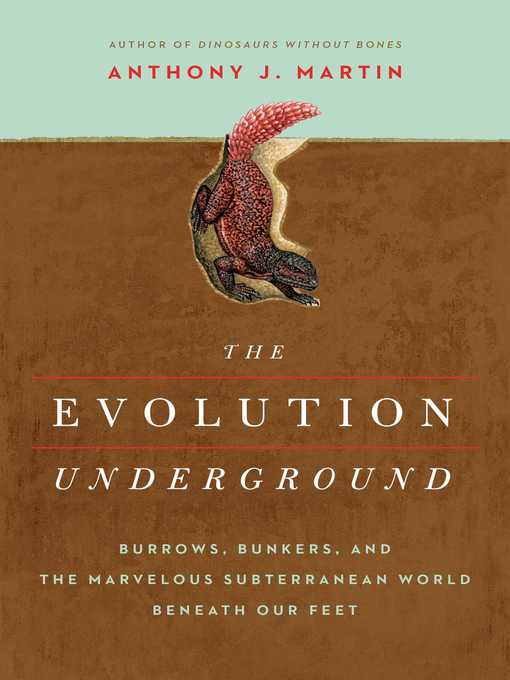
The Evolution Underground
- اطلاعات
- نقد و بررسی
- دیدگاه کاربران
نقد و بررسی

December 15, 2016
Explosions, fires, asteroid collisions, predators: there are good reasons to go underground for critters of many descriptions, as this lightly written, pleasant survey reveals. Many are the payoffs of knowing how to hide, as the old Monty Python gag goes. One is survival--not necessarily of the fittest but of those capable of digging the deepest. Some 66 million years ago, a massive asteroid hit the Earth, causing a huge wave of extinctions. As a result, writes paleontologist Martin (Geosciences/Emory Univ.; Dinosaurs Without Bones: Dinosaur Lives Revealed by Their Trace Fossils, 2014, etc.), "all of the dinosaurs that did not have the good sense to be birds died." Many of the critters that did survive the cataclysm had the good sense to dwell under the surface, where they had some measure of protection from the elements. Just so, Martin writes in a closing reverie, when Mount St. Helens went up in a plume of ash and fire 36 years ago, only 14 of the 55 mammal species on the mountain survived--and guess which ones? Yep: burrowing rodents, along with a tiny shrew. Martin, known for having discovered an ancient burrowing dinosaur, examines the world underground and the evolutionary advantages attendant in knowing how to get around down there (and, as he notes, even some birds burrow). The tone is amiable and unchallenging, pitched at the level of a nature documentary ("given that our fine feathered friends of today are descended from Mesozoic theropod dinosaurs, we must look to those dinosaurs for clues"). Though Martin sometimes stretches for relevance, as when he clumsily works The Shawshank Redemption into the proceedings, the narrative is generally straightforward and enjoyable. And given the undeniable advantages of sheltering where no one can see you--no one but snakes and alligators, that is--it seems well in this fraught world to read up on how pocket gophers have built their successful subterranean empires. A spry exercise in popular science. Can you dig it?
COPYRIGHT(2016) Kirkus Reviews, ALL RIGHTS RESERVED.

February 1, 2017
Martin (geology, Emory Univ., Dinosaurs Without Bones) shows how burrows have been a survival method for all types of creatures for hundreds of millions of years. This book takes a comprehensive look at the subject, covering both contemporary animal habitats and burrows used as an evolutionary adaptation that ensured species' survival through major cataclysmic changes and mass extinctions that mark changes in geologic time periods. All manner of animals--worms, crustaceans, fish, amphibians, mammals, and even humans--create burrows to protect themselves from predators, raise their vulnerable young, and regulate temperature and humidity through seasonal changes. In doing so, these species transform the geology and ecology of their environment, effectively becoming ecosystem engineers as they alter the chemical and structural makeup of landforms and ocean floors, while serving as keystone species that guarantee the survival of a whole host of organisms. The chapters on paleontology are particularly noteworthy, as Martin is an expert ichnologist, studying the fossilized traces of animal activity found in rocks. Regrettably lacking are illustrations, forcing readers to imagine complex burrow structures from description alone. VERDICT A great introduction and history that will fascinate ecominded conservationists and fossil hunters.--Wade M. Lee, Univ. of Toledo Lib.
Copyright 2017 Library Journal, LLC Used with permission.




دیدگاه کاربران